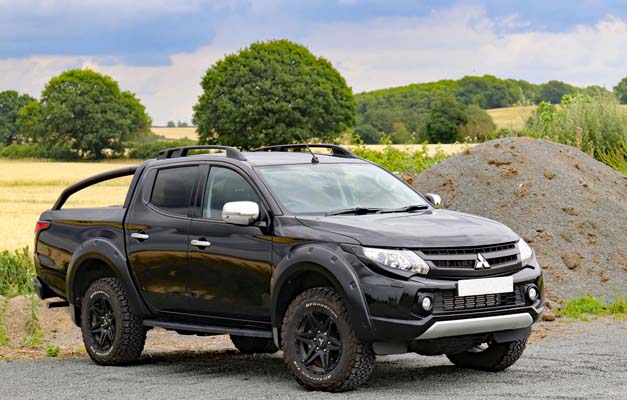

The Mitsubishi L200 is now in its fifth generation and balanced refinements have seen it remain as one of the most favourite pick-ups on the planet. Head out onto the road and what you’ll instantly observe is a comparative absence of body roll.
This is a way more composed affair than before, and all the better for it. Certainly, there are tough, stylish and affluently equipped competitors for the L200 of course, counting the Fiat Fullback, Ford Ranger, Isuzu D-Max, Nissan Navara and Volkswagen Amarok.
However, in terms of its driving fun, performance, efficiency and load capacity, the Mitsubishi L200 sets the bar very high for its rivals.
The 2.4-litre MIVEC diesel engine makes its debut in the fifth generation of Mitsubishi L200 and is a much higher-tech unit than we can imagine to see in pick-up trucks. Common-rail injection, variable valve timing and aluminium construction all make the way to give the edge on performance and efficiency grounds.
The Mitsubishi L 200 engines are available in two trims; with the entry-level 4Life derivatives having a 151bhp version with 380Nm of torque but all other models get 178bhp and 430Nm. Mitsubishi has marvellously coped up to meet the first stage of Euro 6 emissions regulations without resorting to AdBlue, keeping running costs down for the users.
Performance is simply invigorating in the higher-powered engine with a 0-62mph time of 10.4s while the lower powered option has a 12.2s flying time that’s near to the average for the class.
If you’re searching for a pick-up to use as a working vehicle, then the L200 is a great machine. Its good value, practical, easy to drive, comparatively comfortable are better than its rivals in all sectors.
The Mitsubishi L200 is surely a significant innovation over its forerunner, no matter you are looking from inside or out.
There is no doubt on the durability and comfort of the cabin of Mitsubishi L200. The materials are ample for the pickup market with some nice detailing thrown in, which is quite amazing.
The neat Super Select 4×4 control dial sits behind the gear lever and there’s a clear instrument cluster with a clear display showing you which drive mode you’re in. A large touchscreen is present in the centre of the dash on higher spec models, but it does look a bit too much like an after-market addition.
Passenger space is satisfactory with plenty of headroom and space for a six-foot adult to sit comfortably behind a similar driver, but the low seating does mean they have to gather their knees up a bit. Storage space is limited to a bin between the front seats, some narrow door pockets and a glove box that can take the manual but little else.
The L200 is made to be robust, but that doesn’t mean it cannot organise particularly fine to be a big passenger carrying SUV in terms of tranquillity and sophistication. Rather, it is a vehicle which you can trust. The latest model gets a much more considerable buttressed chassis with more substantial joints between the frame, load bay and cabin.
The degree of safety equipment given as standard is excellent for the pick-up class as the L200 is offering many advanced active safety features that we’re used to seeing on passenger cars but missed at the world of the pick-ups before.
The stability and traction control system can brake individual wheels to correct understeer and over steer while diverting power to the wheels with most grip. There are seven airbags, an adjustable speed limiter and Trailer Stability Assist is provided as standard too, an extension to the stability control system that regulates itself if a trailer is attached.
With the help of ABS and a steely push of the middle pedal, the brakes are compelling, while low range and a short first gear supplement the four-wheel drive to make short work of off-road ascents and descents. Reconditioned Mitsubishi engines become your need if your engine isn’t running smooth and you can buy them from all Mitsubishi authorized engine repairing workshops.
